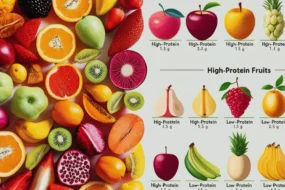
Microgreens are young vegetable greens packed with flavor and nutritious value, perfect for enhancing any diet. Unlike sprouts that are grown without soil in a sprouting jar, microgreens are grown in soil and harvested as small sprouts at around 2-3 inches tall, just before they become a mature plant.
With over 50 varieties—including families like mustards and radishes—you can look over each option and select types for their own reasons and appeal. Whether growing in the ground or indoors with trays, seed quilts, and other equipment, they’re easy to grow at home with tips from websites and growing guides. Choose what suits you alphabetically, or pick by merits, to enjoy a fresh addition to every meal.
The Best Microgreens
The best microgreens are nutrient-dense, flavorful young greens like broccoli, arugula, red cabbage, and kale. Easy to grow and packed with health benefits, they bring fresh flavor and versatility to any meal.
Benefits of Microgreens
Microgreens aren’t just a trendy garnish—they’re among the best green vegetables you can add to your meals. These small but mighty greens offer a diverse variety of nutritious options, from spicy radish shoots to delicate leafy greens like arugula.
They’re an excellent source of vitamins, minerals, and antioxidants, often surpassing the nutrient content of their mature counterparts. From a nutritional point of view, they help meet daily nutritional goals, providing essential nutrients like potassium, calcium, iron, and even folate for those on specialized diets like the MTHFR diet.
As someone who enjoys growing microgreens, I’ve discovered how easy they are to cultivate in small spaces, making them an affordable, sustainable solution for healthy eating.
These greens can help protect against serious conditions like heart disease, diabetes, and Alzheimer’s, while adding a burst of flavor and nutrition to any diet. Their versatility in dishes and salads encourages us to eat more greens, promoting overall health.
Plus, you’ll love the convenience of having a fresh source of greens year-round. With simple tips, anyone can grow their own microgreens at home, turning healthy eating into an accessible, budget-friendly habit.
Potential Risks of Eating Microgreens
While microgreens are a nutritious addition to your diet, it’s important to be aware of some potential risks.
Unlike sprouts, which grow in warm, humid conditions that can foster bacteria, microgreens thrive in safer environments like uncontaminated soil or a single-use growing mat. However, you should never consume moldy microgreens or those with a bad smell.
These are signs of contamination that could lead to food poisoning. Whether you grow them yourself or buy them, knowing the differences between organic and inorganic food is key.
Organic microgreens are cultivated without synthetic chemicals, reducing the likelihood of harmful residues, while inorganic ones may involve chemical fertilizers and pesticides that could affect their quality. In my experience, a little caution goes a long way—if you notice anything off, it’s best to discard them.
People with a compromised immune system, including pregnant women, should be extra careful. If you have concerns about how microgreens might affect your immune system health, speak to your doctor.
Although the risk is generally rare, it’s always wise to consult an expert to ensure microgreens are safe for your specific needs. Following proper hygiene and growth practices will help you enjoy microgreens without worry.
- Arugula Microgreens
Roquette Rocket arugula is one of the most popular varieties of microgreens to grow. Known for its peppery flavor, it brings a burst of taste to greens salad mixes, pizza, and sandwich toppings. It’s also a go-to choice in salad bags, thanks to its fresh and zesty kick.
Adding arugula to your meals isn’t just about taste—it also offers a wealth of nutritional benefits. With high levels of Vitamin A, Vitamin K, and essential trace minerals like iron and manganese, this microgreen packs a powerful health punch.
For the best results, grow arugula in potting mix, which supports its quick growth and makes it easy to cultivate at home. Consider blending it with spicy greens like red cabbage and mustard in a mix like Snappy Micro Mix for added variety and flavor.
Just like knowing Why Storing Apple Juice in the Refrigerator Is Crucial, learning the best way to grow and store arugula microgreens will ensure you enjoy their peak freshness and nutrition.
- Broccoli Microgreens
Broccoli microgreens are a popular choice in the microgreen industry. They’re often seen in mixes on the market because they’re inexpensive, quick to grow, and nutritious. They don’t have a strong flavor, but that’s part of their charm as a base microgreen.
With high nutritional value and volume, they can be used in bulk for salads, sandwiches, or egg dishes. The most common variety is Waltham-29, a robust type with a bigger leaf where the nutrition is concentrated. This heirloom brassica has a fuller leaf size compared to varieties like Calabrese and Di Cicco.
As a beginner-friendly option, broccoli microgreens are a great choice for those just starting to grow their own microgreens. They grow quickly and easily, helping new growers gain confidence.
Whether used as a salad-based green or a versatile addition to meals, these green-colored microgreens offer an economical and nutritious option. My step-by-step guide will walk you through growing these hardy greens.
For those particularly interested in nutritional aspects, check out my Microgreen Nutritional Resource for a wealth of information in one convenient spot.
- Red Cabbage Microgreens
Red cabbage microgreens are loved for their vibrant color, featuring red stems and dark green leaves that make them stand out in any dish. Although Red Acre Cabbage is a bit more expensive than some green varieties, it’s a popular variety due to its visual appeal.
This heirloom type is not only attractive but also nutritious, packed with high amounts of vitamins C and K, as well as essential macro and trace minerals. It’s also very easy to grow and grows uniformly, which makes it a top choice in my microgreen seed mixes like Mighty Micro, Intensely Flavored, and Snappy Micro.
Compared to other brassicas such as broccoli, kale, and mustard, red cabbage has a mild, slightly less sweet cabbage flavor that pairs well with salads, sandwiches, and taco toppings.
Its color and flavor add a special touch to food and are ideal for people looking for something unique. When growing red cabbage microgreens, keep in mind they’re prone to being overwatered, so take extra care. I find that these microgreens look even better than heads of red cabbage and tend to be the first choice on my table when I offer a variety.
- Carrot Microgreens
Carrot microgreens are a unique and best addition to any microgreen growing rotation. Though they are less common than broccoli, they offer a rich carrot flavor and surprising nutritional value similar to vitamins and macro-minerals found in other root vegetables.
With their ferny-looking leaves, these microgreens require only a pinch to add flavor to a salad or green smoothies. Unlike other microgreens, you don’t need to grow a large tray of them, as their strongly flavored profile allows you to use them sparingly.
One of my favorite ways to use carrot microgreens is to chop a tablespoon and sprinkle it over stews or a pot roast for an extra layer of sweetness. These microgreens don’t lose their flavor when heated, so adding them at the end of cooking keeps dishes tasting fresh.
I also enjoy adding them to soup just before serving, whether it’s vegetable, beef, or chicken-based. Danvers is the most popular carrot seed used for microgreens as it’s a prolific seeder and an heirloom seed that offers consistency in every tray.
- Kale Microgreens (Many Varieties)
Kale Microgreens are a top choice for their impressive nutritional benefits and ease of growth. Whether you’re a seasoned grower or a new buyer, these microgreens bring flavor and vibrant color to any dish.
They thrive in small spaces and grow quickly in Home Microgreens setups, making them both economical and highly accessible. With a mild flavor, they pair well with a number of meals. The most popular choices include Green Kale and Red Russian Kale, known for their beautiful rosy pink stems and delicate green leaves.
These heirloom varieties aren’t just visually appealing—they’re packed with essential nutrients.
Russian Kale, in particular, stands out as a garden favorite. Its red leaves and hairy stems grow slower than some other Brassica family members like broccoli and cauliflower, but they develop a superior taste when harvested at the true leaf stage.
For the best results, consider harvesting within 7 to 10 days for a tender, palatable microgreen. If left longer, up to 3 or 4 days, the flavor may become stronger, but they still taste great. Compared to the more common green varieties, Red Russian offers a unique aesthetic for your garden plant collection while remaining affordable for all levels of growers.
- Purple Vienna Kohlrabi
Purple Vienna Kohlrabi stands out as one of the most unique and visually appealing microgreens. Unlike the plain-tasting kohlrabi bulbs found in stores, these microgreens offer a sweet, mild cabbage flavor that’s both refreshing and versatile.
The stems display a stunning violet pink hue, while the leaves are dark green with a subtle reddish hue along the edge, making them truly attractive. When grown in trays, they form a tight mass of vibrant purple tones, creating a wonderful visual contrast.
Their uniform habit and rapid growth rate make them ideal for both beginners and experienced growers. I’ve used them in workshops, where participants always appreciate their beauty and ease of handling.
In terms of nutritional benefits, Purple Vienna Kohlrabi may not match broccoli or kale in certain vitamins, but they boast a broader mineral nutrition range. As part of the Brassicas, they can be used much like red cabbage, adding both flavor and vibrant color to dishes.
I’ve experimented with them in various soil trials, and their sturdiness stands out—unlike broccoli, which tends to flop, these microgreens can be shaken without disrupting their growing habit. This makes them not only a joy to grow but also incredibly practical for those looking to explore more typical varieties after mastering this odd, yet delightful, microgreen.
FAQ’s
Q: Which Microgreen is Most Nutritious?
When it comes to nutrition, broccoli microgreens are a top pick, offering high levels of vitamins A, C, and K. However, radish microgreens, arugula microgreens, sunflower microgreens, kale microgreens, pea microgreens, beet microgreens, and spinach microgreens also deliver a rich variety of essential nutrients.
Q: What are The Most Delicious Microgreens?
For a burst of flavor, try mustard, radish, garden cress, pea, and beet microgreens. These flavorful microgreens are easy to grow and perfect for adding variety to your meals.
Q:Which microgreen is the most profitable?
Radish, sunflower, and pea microgreens are highly profitable due to their rapid growth cycles and strong market demand. They sell well because of their robust flavors and rich nutrient profiles, offering producers a quick return on investment in the expanding microgreens market.
Q: What are Superfood Microgreens?
Microgreens are special because they’re young vegetables picked just 5 to 21 days after germination. These little greens grow to about 1 to 3 inches in height—often around 1.5 inches on average—and develop with a stem and cotyledonary leaves or sometimes just one leaf before sprouting two juvenile true leaves.
Not every leafy green at this stage qualifies as a microgreen, but the ones that do are considered nutritional powerhouses, offering a burst of fresh flavor and nutrients in each bite.
Conclusion
Microgreens bring a perfect balance of flavor, nutrition, and versatility to the table. These young vegetable greens are easy to grow at home or find at markets, making it simple to add freshness and color to your meals year-round.
From nutrient-dense broccoli to vibrant arugula and red cabbage, each variety offers unique health benefits, whether you’re aiming to boost your diet, support sustainable eating, or simply enjoy fresh greens. With careful handling, microgreens can enhance both home cooking and professional dishes, proving that sometimes, the smallest greens can have the most significant impact.
I’m Ayesha Zahid, a certified Nutritionist and Dietitian with over 3 years of hands-on experience helping individuals and families improve their health through nutrition.




